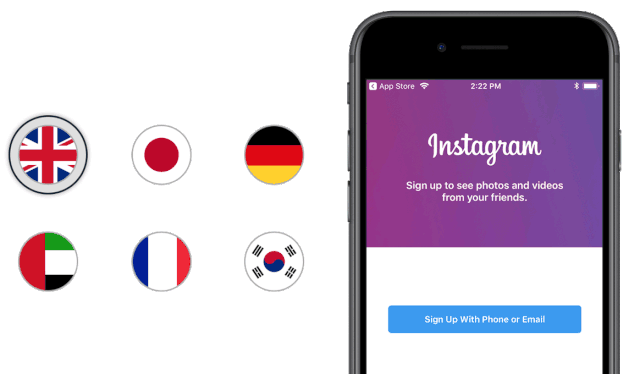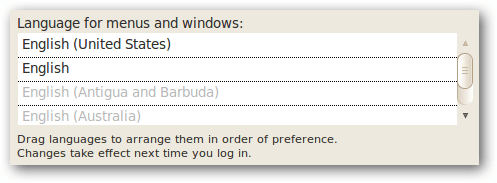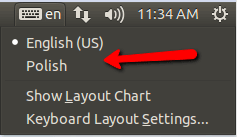This post will discuss Software Localization, software localization best practices, and software localization translation in detail.
What is Software Localization?
Software localization is the process of adapting software to the culture and language of its end-user. It involves translation, design, and UX changes to make software look and feel natural to the target user.
Software localization is more than just translating key text sections into different languages. It also involves adjusting the software’s design to fit the target market’s cultural norms. This might include changing the size and placement of buttons and other design elements. It can also involve modifying the code on the backend to make it easier for employees in different regions to manage and update the software.
| Post On: | Software Localization Guide |
| Post Type: | Manual Testing Tutorials |
| Applicable For: | Freshers & Experience |
| Get Updates From: | Software Testingo Telegram Group |
Imagine if you had to localize a software application from French into English. A simple translation might leave you with text and instructions that are clear enough but with significant usability problems.
The font might be too small to read clearly or may not support English characters, while the length of the text might have shrunk to the point where visual elements on the page look odd. That’s before we even consider the preferences of English users, who might like more information on each page or a different visual layout.
When you look at all of these software localization problems, you’ll see that it’s a much more complicated and important process than it seems at first glance.

Why is software localization translation required or important?
With technology, we can communicate with people from all over the world. This is a great thing, both for developers and users. For developers, it means a potentially unlimited market for any new program or application. For users, it means they can communicate with people from all over the world.
Software localization can help you avoid pitfalls and ensure your product always puts its best foot forward when marketed to international users. A poorly localized product could damage your global sales and brand loyalty, but you can avoid these negative consequences with localization.
What is Software Localization Testing?
Software localization testing is a way to ensure that software behaves as intended when used in different areas around the world. This could be anything from verifying accuracy in a specific city to ensuring suitability for an entire country. By testing in different locations, you can catch any errors or discrepancies in the software before it’s released to the public.
Localization testing ensures that software appears correctly and functions as expected in multiple locations worldwide. This is more than ensuring the app works – delivering a customized user experience based on locale, preferences, and individual needs.
Software Localization Best Practices
Here are some tips to help you avoid these problems, save time and money, and produce a high-quality product for the global market.
Design with localization in mind
To save time and money, create a design that is localization-friendly. Your design should be easy to translate and have a structure that prevents common localization mistakes.
Store all translatable content in Separate.
The first step in internationalizing your application is to move all your text out of the code and into resource files. This allows translators and engineers to work on updates simultaneously without fear of code duplication or damage.
Create a proper style guide and glossary
The style guide ensures that your software and documentation have a unified look and feel, improving the quality of your translations and minimizing inconsistencies. It also adds professionalism to your work, saving you time and money.
Plan for text expansion
Translated text can often take up more space than the original English text. To ensure that your layout can handle the expansion, be sure to leave enough room for dynamic UI expansion in your software. If there are strings that are too long to fit within a certain size, you can include comments in the resource file to indicate that.
Use Unicode/UTF-8 encoding of strings
To ensure your software runs smoothly and without errors, always use Unicode/UTF-8 encoding. This encoding allows your software to support any language in the world and also helps you in reducing development and support costs.
Use icons with care
Icons can be a more efficient way to communicate a message, as they typically require less translation and can reduce cost. However, not all symbols are universal or neutral, so choosing icons your target audience will understand is important.
Software Localization Check List
Here’s the localization testing checklist.
User Interface Tests:
Here are some of the UI tests.

- How does the UI allow changing language?
- Does language change affect UI?
- How does the UI react to the RTL support?
- How does the UI react to changes in language and getting back to English?
- How does UI handle the hyphen after the language change?
- How does the line break for UI titles?
Functionality Tests:
- Does the UI perform as per specification despite the language change?
- Does the UI get affected due to a language change?
- Do the hyperlinks function properly?
- Do the menu links function properly?
- Do the keyboard shortcuts perform after language change?
- Does the UI support multiple keyboards depending on the region?
- Does the input within UI support region-specific characters?
- Does the input get validated for multiple languages?
- Does the database reflect as per the language changes?
- Does the software default to English if no language is chosen?
Region Specific Tests:
These are some region-specific tests that every product needs to look at before release.

- Does the date and time format according to the region?
- Is the currency symbol according to the region?
- Are the usability symbols known within a particular region?
- Do UI action symbols (question mark, stop symbol, file, save symbol) know within the particular region?
- How are the currency symbols and numbers formatted?
- How are the colors for symbols and UI allocated for a particular region?
- How are the phone numbers formatted for a particular region?
- How is the region-specific restriction added to a particular region?
Language-Specific Tests:
- Does the translation work correctly for the UI?
- Is the translation free of errors?
- Is translation regularly updated for new features in UI?
- Is the lack of translation replaced by English by default?
- Is the lack of translation replaced by space or symbols?
- Does the translation of UI corrupt?
- Does the translation of UI inaccurate?
These are some of the localization tests that I have found so far. You can develop more tests depending on the UI you are testing. I’d appreciate your sharing your suggestions on the criteria listed in this article. I am open to suggestions and comments.
What is software localization?
Software localization is adapting software to different languages, cultures, and regions by integrating translation and voice-control features. It is considered essential for increasing the credibility of companies in target markets and for laying a strong foundation for improving language accuracy in the future. But more than that, it also brings great economic benefits to local businesses and employees.
What is the importance of localization testing?
Localization testing aims to ensure that your product is ready for global markets. It includes ensuring all the text is translated correctly and that your user interface is adjusted to fit the culture of your target audience.
What does a software localization engineer do?
A lot goes into localization, and the engineers who handle it are responsible for a lot of the behind-the-scenes work that ensures a website or app works well in other languages.
